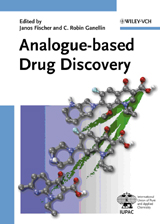|
|
Vol.
28 No. 1
January-February 2006
IUPAC IN BEIJING—Division Roundups Part II
—Division V. Analytical Chemistry
—Division VI. Chemistry and the Environment
—Division VII. Chemistry and Human Health
—Interdivisional Subcommittee on Materials Chemistry
—Committee on Chemistry Education
—Committee on Chemistry and Industry
Division VII. Chemistry and
Human Health
Paul W. Erhardt, President
For its meeting, Division VII developed a very useful tool for evaluating the status of numerous ongoing projects. For the first time, a short update form was distributed by the three subcommittee chairpersons to each of the project leaders within their respective technical areas. There were approximately 10 projects completed in the current biennium, about 25 active projects, and nearly 15 projects undergoing serious consideration at various stages of subcommittee, divisional, and IUPAC review. Taking just one highlight from each subcommittee’s activities, the following examples demonstrate the breadth of topics being addressed by the division.
 |
Within the Subcommittee on Nomenclature, Properties, and Units (NPU) in Laboratory Medicine, the C-NPU database <http://dior.imt.liu.se/
cnpu> has been upgraded with codes for the most common properties associated with clinical chemistry using mass concentrations along with identifiers for clinical molecular biology, transfusion medicine, and immunoheamatology. Within the Subcommittee on Medicinal Chemistry and Drug Development, a thorough examination of the role that analog-based drug discovery has played toward bringing both improved and novel therapeutics to the clinic was completed. This important topic is the subject of a book recently published (John Wiley & Sons, GMbH, 2005) and replete with numerous case studies. Finally, within the Subcommittee on Toxicology and Risk Assessment, the second edition of the popular text Fundamental Toxicology for Chemists will soon be released (Royal Society of Chemistry).
Thanks to a proactive and rigorous effort by the nomination committee, the division’s elections were a resounding success. Among the 10 titular members, 3 associate members, and 8 national representatives, all of which will be participating at the divisional level in 2006, a total of 19 different countries are represented. Dr. Pedro Soares de Araujo (Brazil) was elected vice president.
Finally, the entire division is extremely excited about the recent formation of the IUPAC-Richter Prize in Medicinal Chemistry. Funded by a generous donation from Richter Pharmaceuticals, Ltd. (Budapest, Hungary), this award will recognize one scientist every two years whose work has made a significant contribution to medicinal chemistry within the context of drug discovery and development. Awardees will receive a cash prize of USD 10 000 at an IUPAC-associated scientific meeting wherein they will be expected to deliver a lecture about their work. Funding has been allocated for 5 such awards across 10 years. (For more information, see www.iupac.org/news/Richter_prize.html)
Page
last modified 29 December 2005.
Copyright © 2003-2006 International Union of Pure and
Applied Chemistry.
Questions regarding the website, please contact [email protected]
|